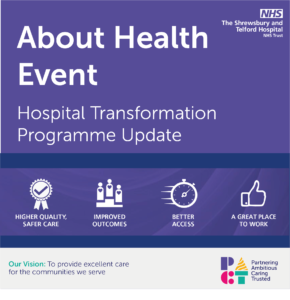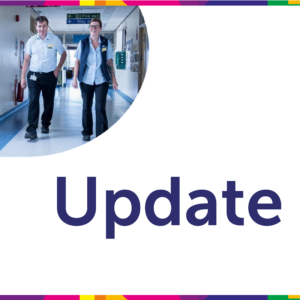Join an Event
We want you to #GetInvolved in your local hospitals. One simple way is to join us at one of our online meetings or events.
Please note: All our community engagement events are being held using Microsoft Teams at the present time.
Click to join an upcoming meeting below

‘About Health’ – Hospitals Transformation Programme Update
Online 30 April 2024, 18:30 – 19:30
This event will give you the latest update on the Hospitals Transformation Programme (HTP). Join this About Health event and meet members of the Hospitals Transformation team and key clinical leads to find out more on how the plans have been developed, opportunities for you to get involved and what will happen next. We are ask that all questions are submitted in advance. These will be discussed at the meeting if time permits and, for transparency, questions and answers will also be posted on our HTP website. Please email any questions you have to: sath.engagement@nhs.net by 1pm on Friday 26 January 2024



